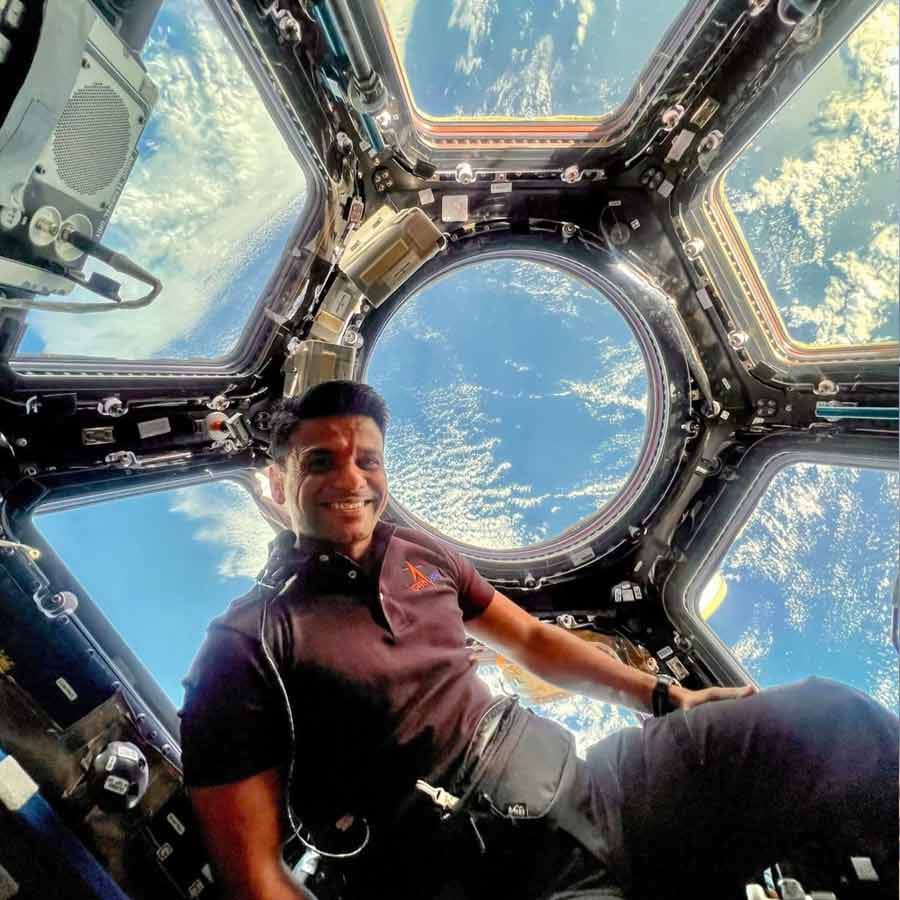
Shillong, July 19 – How do astronauts sleep when the sun rises and sets 16 times a day in space? This was one of the many questions posed to Indian astronaut Shubhangshu Shukla during a live interaction with students, and he had all the answers.
Shukla interacted from the International Space Station (ISS), where he was stationed as part of NASA’s Axiom-4 mission, Shukla engaged in a fascinating Q&A session organized by ISRO’s North Eastern Space Applications Centre (NESAC). The program connected students from across the northeastern region with India’s first astronaut to reach the ISS.
Time in Space: “We Follow GMT, Not the Sun”
Shukla addressed the most intriguing question of the day: How do astronauts manage their sleep when they see 16 sunrises and sunsets every 24 hours?
“We orbit the Earth every 90 minutes, so we see the sun rise and set 16 times a day,” he explained. “But we don’t operate based on daylight. We follow Greenwich Mean Time (GMT) to maintain a fixed daily schedule.”The approach ensures astronauts can stick to consistent work, sleep, and meal times, avoiding confusion from the rapid day-night cycles caused by the ISS’s high-speed orbit.
Adapting to Zero Gravity
Students were also curious about how astronauts cope with microgravity. Shukla, originally from Lucknow, spoke candidly about the physical challenges of space travel.
“We grew up in Earth’s gravity, so our bodies take time to adjust to space. Initially, there’s discomfort – what we call space sickness – but we have medication and adapt quickly,” he said. Maintaining physical health in space is critical. With no gravity, muscle and bone density can weaken, so astronauts follow strict fitness routines. “We exercise every day using treadmills, bicycles, and strength training equipment,” Shukla shared. “It’s vital for staying fit throughout the mission and ensuring a safe return to Earth.”
Technology and Inspiration
Shukla also spoke about robotic arms used in the ISS for assistance with tasks, showcasing the growing role of automation in space missions. He encouraged Indian students to dream big and aim for the stars, emphasizing that India has a bright future in space exploration.
A Historic Mission
Shubhangshu Shukla was a part of a four-member crew that launched to the ISS on June 26 aboard SpaceX’s Dragon spacecraft. His fellow astronauts include Peggy Whitson (Mission Commander), Slawosz Uznański-Wiśniewski (Mission Specialist), and Tibor Kapu.
Shukla’s presence on this mission marks a major milestone: he is the first Indian astronaut to live aboard the International Space Station, representing a proud moment for India’s growing role in global space exploration.
Inspiring a Generation
Through this interactive session, Shubhangshu Shukla not only answered questions but also sparked curiosity and inspiration among students, encouraging them to think beyond boundaries—both earthly and cosmic.
